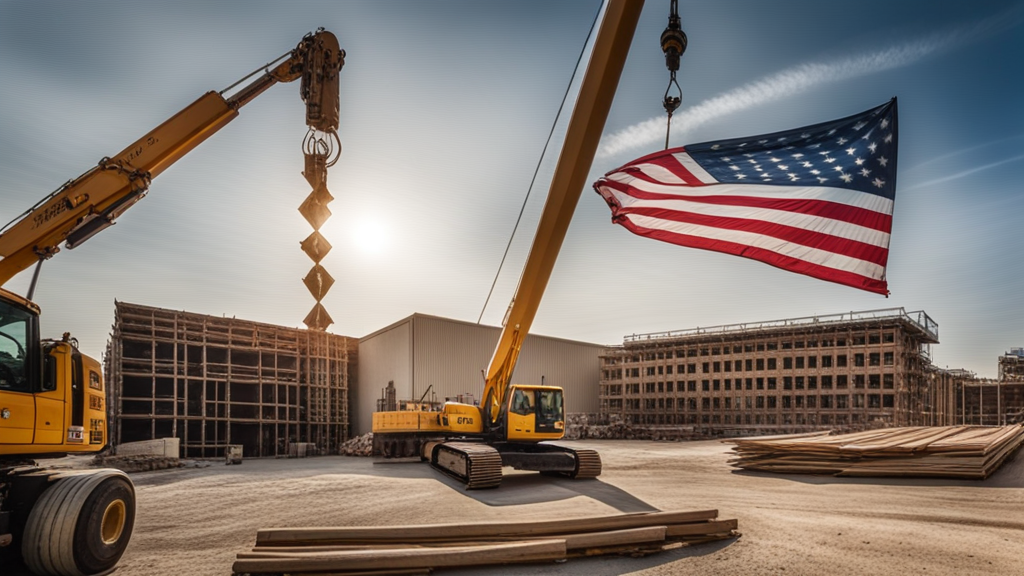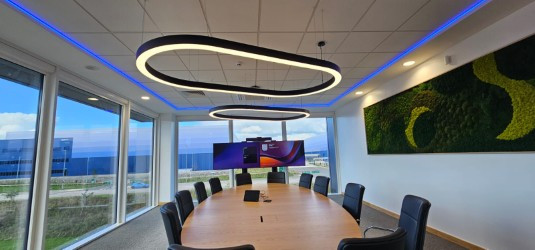How healthy is the US construction market?
The recent news of a decline in US construction spending in April 2024 has sent ripples through the industry. While the dip was slight (0.1%), following a similar decline in March, it raises questions about the health of the construction sector and its future, writes John Ridgeway.
Data from the US Census Bureau reveals a decrease in both private and public construction spending in April. Total spending is down 0.1% to $2,099.0 billion compared to the revised March estimate of $2,101.5 billion.
Private construction is down 0.1% to $1,611.9 billion from the revised March estimate of $1,613.3 billion, but residential construction is slightly up by 0.1% to $890.4 billion from $889.5 billion in March.
It is not good news for the other sectors. Non-residential construction is down 0.3% to $721.5 billion from $723.8 billion in March. Public construction is down 0.2% to $487.1 billion from the revised March estimate of $488.2 billion.
Educational construction is also down 0.2% to $103.5 billion from $103.6 billion in March, as is highway construction, down 0.5% to $149.6 billion from $150.4 billion in March.
What caused the decline?
Several factors might be contributing to the recent slowdown. Some experts believe that the Federal Reserve's decision to raise interest rates could be dampening borrowing enthusiasm. Higher interest rates make loans for construction projects more expensive, potentially discouraging businesses and individuals from undertaking new development.

Ongoing disruptions in the global supply chain also continue to pose challenges. The availability of critical building materials continue to be limited, leading to project delays and increased costs. This uncertainty might be deterring some companies from initiating new construction projects.
Another possibility is labour shortages. The construction industry continues to face the problem of finding qualified workers to fill various construction roles, impacting project timelines and budgets. This shortage is also driving up labour costs, further squeezing profit margins.
Broader economic anxieties and inflation concerns are also likely to be causing investors and businesses to hold back on large-scale construction projects. A wait-and-see approach seems to be prevalent.
Dips and booms
In spite of the slight down tun there is no cause for alarm. Construction spending is cyclical in nature, experiencing periods of growth followed by inevitable slowdowns. The most recent major decline occurred during the 2008 financial crisis and was followed by the subsequent housing market collapse. This period witnessed a significant drop in construction spending, particularly in the residential sector.
After the initial shock of the COVID-19 pandemic, the construction industry then experienced a rebound. Low interest rates and government stimulus packages fuelled a surge in construction activity in 2021 and 2022.
So, in spite of this recent decline, there are good reasons to believe that the construction industry can weather this storm and rebound. The underlying demand for new housing, infrastructure improvements and commercial spaces remains strong. Population growth, urbanisation trends and the need for modern infrastructure will also continue to drive construction activity in the long term.
There's a growing focus on infrastructure investment by both the public and private sectors. This includes initiatives for improving roads, bridges and public transportation systems, which will create opportunities for construction companies.
New technologies like Building Information Modelling (BIM) and prefabrication also hold promise for improving efficiency and reducing construction costs. These advancements can help to mitigate the impact of labour shortages and supply chain disruptions.
Predictions for the future
Predicting the future of construction spending is inherently challenging. However, industry experts are offering cautious optimism. Some analysts anticipate a moderate rebound in construction spending later in 2024, as the effects of rising interest rates wane and supply chains stabilise
A potential shift towards renovation and remodelling projects is also likely to occur. With new construction costs potentially rising, homeowners and businesses may prioritise upgrades and improvements to existing structures.
And we cannot forget that sustainability is becoming a top priority in construction. Investments in energy-efficient building materials and technologies are likely to continue, creating a niche market for specialised construction firms.
The human impact of construction
While economic data and spending figures are important, it's crucial to remember the human impact of the construction industry. It provides jobs for millions of people across a wide range of skillsets. From architects and engineers to carpenters and welders, the construction sector plays a vital role in supporting livelihoods and driving economic growth.
The recent slowdown in US construction spending serves as a reminder of the industry's vulnerability to various economic and logistical factors. However, the historical trends and future predictions paint a picture of resilience and potential for long-term growth.
The industry is navigating these challenges by addressing the skilled labour shortage through robust training programmes and providing apprenticeship opportunities. Adopting new technologies like BIM and prefabrication is also enhancing efficiency, safety and sustainability in the construction process.
By prioritising these areas, the American construction industry can ensure a more stable and sustainable future. It will continue to play a critical role in shaping the physical environment we inhabit and contribute to the nation's overall economic well-being.
While the future remains uncertain, the industry's rich history, enduring human impact and potential for innovation offer reasons for optimism. By learning from the past, embracing new technologies and prioritising collaborative solutions, the American construction industry can build a stronger and more resilient future.
Additional Blogs

Utilities consultants: providing the vital support every construction project needs
The UK’s cost of living crisis is adding significant financial challenges for everyone across the built environment, not least property developers and builders. While utilities consultants can’t do...
Read moreWhy cutting down trees will not solve the UK’s subsidence crisis
Across the UK, thousands of healthy, mature trees are being cut down each year in the name of protecting homes from subsidence. The issue is especially acute in the clay areas of southern England,...
Read more

The changing face of workplace AV and what FM managers need to know
In today’s hybrid workplaces, facilities managers can no longer treat audio-visual systems as background infrastructure - they are now mission-critical assets that directly influence productivity,...
Read more